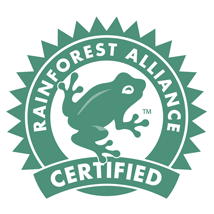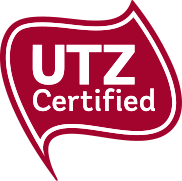In November 2018, the Australian Government passed legislation (the Modern Slavery Act – MSA), requiring businesses with a turnover over $100mil to provide an annual statement outlining the actions taken to investigate if slavery exists in their supply chains.
This is a monumental shift in the way Australian businesses consider their sources of supply. In a traditional procurement sense, we look only at our direct suppliers when managing risk however the legislation now requires us to look at our supply chain in its entire network and be accountable for how workers are treated in that network.
As we now enter into the FY20 new financial year, we are now in the first reporting period where businesses are required to begin compiling a statement. To assist in that process, we have compiled the 6 key elements of a modern slavery statement into a simple summary as outlined below.
Identify the reporting entity covered by the statement including name, ACN and registered office address.
2. Describe the reporting entity’s structure, operations and supply chains
Reference should be made to the following descriptors:
- structure: the legal and organisational form of the entity, including its legal classification (company, trust, partnership), number of employees, whether it is part of a larger corporate group of entities, and whether it owns or controls other entities
- operations:any activity or business relationship (in Australia or overseas) undertaken by the entity to pursue its business objectives and strategy, including research and development, construction, production, arrangements with suppliers, distribution, purchasing, marketing, sales, provision and delivery of products or services, and financial lending and investments
- supply chains:the products and services (including labour) that contribute to the entity’s own products and services. This includes products and services sourced in Australia or overseas and extends beyond direct suppliers.
To assist in describing supply chains the entity should:
- identify the countries or regions where the entity’s suppliers are located
- explain the main types of goods and services the entity procures
- to the extent possible, identify the source countries for these goods and services and any external public supplier lists.
3. Describe the risks of modern slavery practices in the operations and supply chains of the reporting entity and any entities it owns or controls
The ‘risks of modern slavery practices’ means the potential of an entity, through its supply chains, to:
- cause modern slavery (e.g. own and run a factory that uses exploited labour)
- contribute to modern slavery (e.g. turn a blind eye to a supplier who uses exploited labour or set unrealistic cost targets that can only be met with exploited labour)
- be directly linked to modern slavery (e.g. via operations, products and services that are connected to modern slavery through another entity e.g. electronic goods).
This criteria does not require a certification that all operations or supply chains are slavery free, or an exhaustive list of all specific risks, but must include sufficient detail to clearly show the types of products and services in the entity’s operations and supply chains that may involve risks of modern slavery.
4. Describe the actions taken by the reporting entity and any entities it owns or controls to assess and address these risks, including due diligence and remediation processes
The statement should include:
- actions taken to address risks during the 12 month reporting period
- information about the processes the reporting entity and any entities it owns and controls have in place to remedy situations.
Due diligence means ongoing management processes to identify, prevent, mitigate and account for how an entity addresses actual and potential adverse human rights impacts in their operations and supply chains, including modern slavery.
There are four key parts to due diligence:
- identifying and assessing actual and potential human rights impacts (for example, screening new suppliers for modern slavery risks)
- integrating findings across the entity and taking appropriate action to address impacts (for example, introducing internal training on modern slavery and processes for incident reporting)
- tracking an entity’s performance to check whether impacts are being addressed (for example, internal audits of supplier screening)
- publicly communicating what the entity is doing (for example, by publishing a Modern Slavery Statement or publicly responding to allegations against a supplier).
Remediation may take many forms including steps to ensure the harm cannot recur (e.g. changing suppliers), formal apologies, compensation, stopping certain activities or introducing a grievance mechanism providing suppliers, employees or the community an easy avenue to raise modern slavery concerns.
5. Describe how the reporting entity assesses the effectiveness of these actions
The Act only requires entities to explain the method of assessing the effectiveness of an entity’s actions, not how effective those actions are. The assessment of the effectiveness of an entity’s actions should be by both qualitative and quantitative methods.
6. Describe the process of consultation with any entities the reporting entity owns or controls (a joint statement must also describe consultation with the entity giving the statement)
This criteria only needs to be addressed if the reporting entity owns or controls any other entities. The level of consultation undertaken by the reporting entity should:
- reflect the relationship with the other entity and the risk profile of that entity
- be sufficient to ensure that the modern slavery risks relating to the other entity have been appropriately identified, assessed and addressed
- ensure the other entity is aware of what actions they need to take.
Approving and publishing a statement
For a statement to be approved, it must be approved by the principal governing body of the reporting entity, e.g. the board and signed by a member of the governing body. Delegation of these responsibilities is not permitted under the Act.
Following approval, the statement must be submitted to the Department of Home Affairs for publication within six months after the end of the reporting period.







